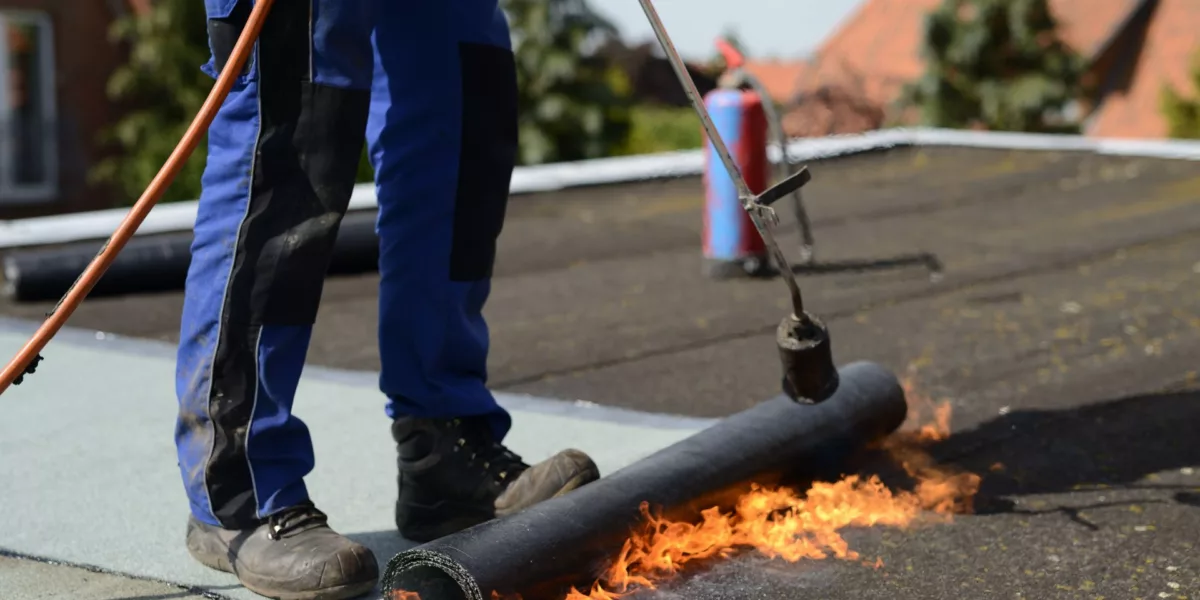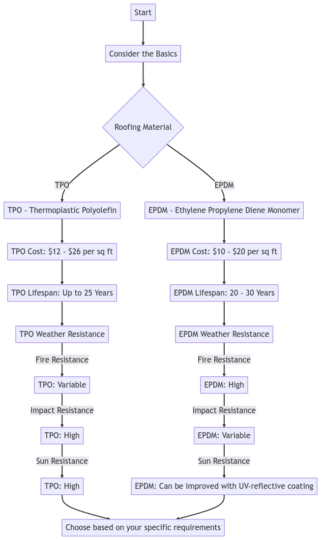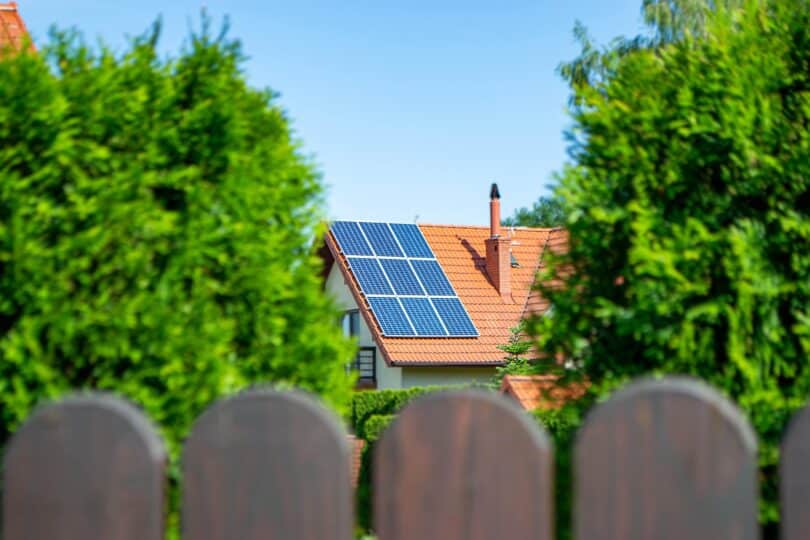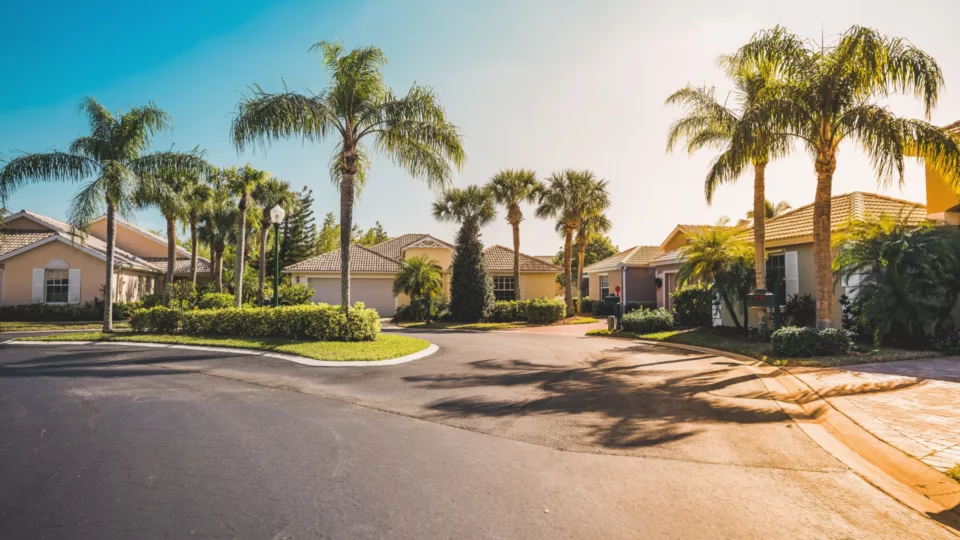In This Article
If you’re just starting to look into a commercial roof replacement, you may be surprised by the options available to you. Since most commercial roofs are low-slope, the best commercial roofing options are often single-ply membrane roofs, which help move water off your roof. But a lot of commercial property owners find themselves wondering which option is best in the debate between TPO vs. EPDM.
If you don’t have a roofing background, it can be difficult to make the best decision for your business’ roof. But we’re here to make it easier. We’re Classic Roofing & Construction, and we’ve got 20 years of experience with installing both TPO and EPDM commercial roofing systems. So today, we’re going to help you answer the age-old question: Which is better when it comes to TPO vs. EPDM?
What Is a Single-Play Membrane Roofing System?
Both TPO and EPDM are membrane roofing systems, but what does that mean for you? Put simply, a single-ply membrane roof is made of rubber or another synthetic material that is chemically or physically adhered to a layer of insulation. When properly installed, your roofer will then adhere this roofing system to the structure of the building.
These membrane roofing systems work well for low-slope roofs due to a variety of factors, including being:
- Water-resistant
- Lightweight
- Durable
- Affordable
- Available in a variety of colors
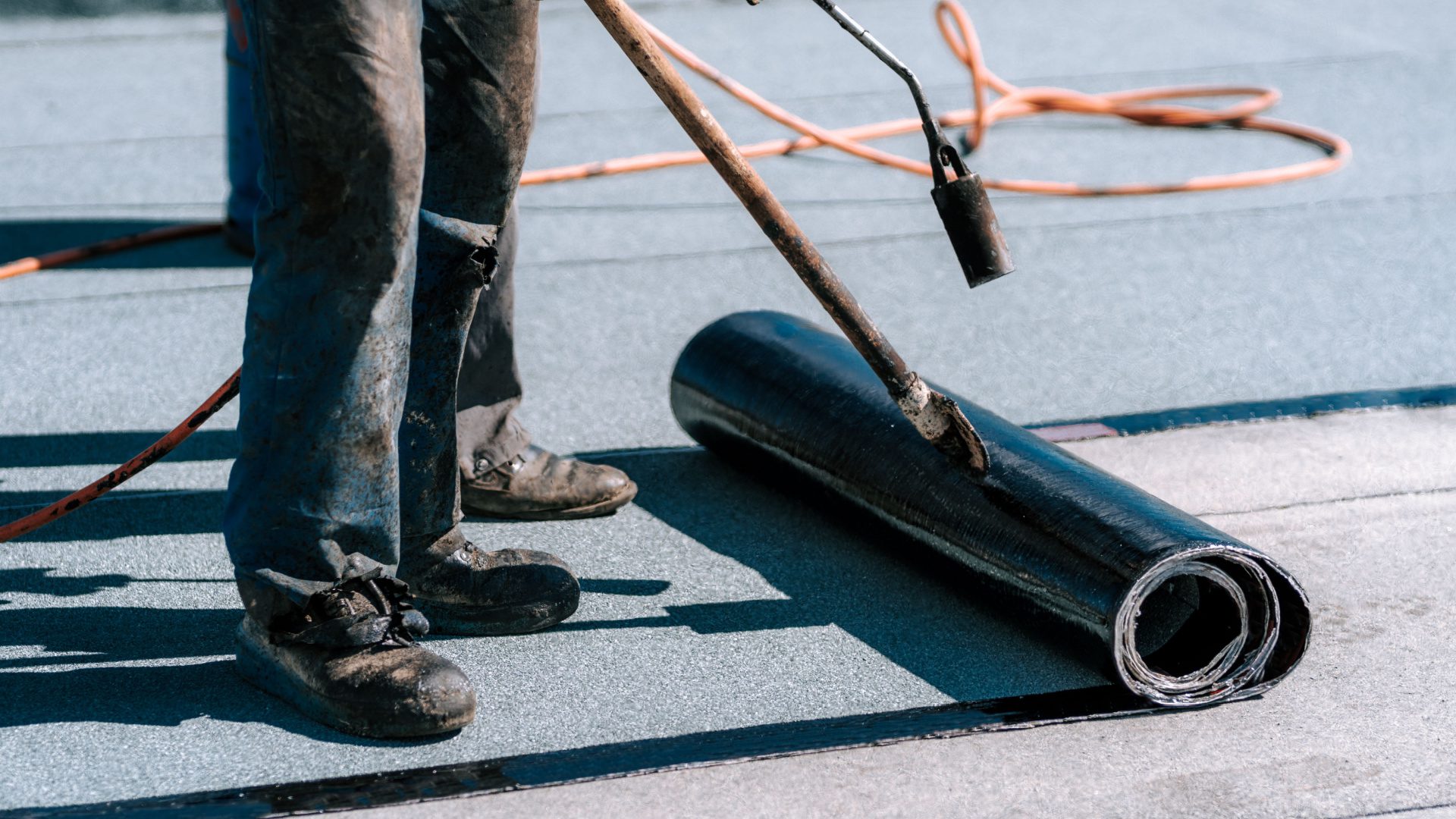
Many types of single-ply membrane roofing materials exist, but two of the most popular are TPO and EPDM. So how do you tell which one to use for your commercial roof replacement?
TPO vs. EPDM: The Basics
If you want a simple answer to the question, “TPO vs. EPDM, what’s best?” the truth is that there is no simple answer. Each roofing material comes with its own pros and cons that may make it better or worse for your commercial roof installation. But to get started, let’s define what each of these roofing materials is.
What Is TPO Roofing?
TPO stands for thermoplastic polyolefin, and it’s one of the most popular commercial roofing materials on the market. Despite the sound of its name, it’s actually made of a kind of rubber and reinforced scrim, which offers broad weather protection.
Standard TPO roofing systems come in white, which helps reflect heat and UV rays away from your building. For this reason, TPO roofs often receive praise for reducing monthly energy bills. And since it creates a water-tight seal around your roof, it prevents algae and mold from developing, which are two serious problems for Florida roofs.
But of course, we can’t resolve the issue of TPO vs. EPDM without also taking a look at what EPDM is.
What Is EPDM Roofing?
EPDM, on the other hand, stands for ethylene propylene diene monomer, and this is usually what people mean when they talk about a rubber roof. Generally, an EPDM roof will include three layers:
- A rubberized base layer
- A fire-resistant layer
- A polyester fiber reinforcement layer on top
Unlike TPO, EPDM usually comes in black. This can attract heat to your structure and increase energy bills as a result. However, there is a way around this: EPDM roofing systems can also come in white. This new color is achieved by adding a layer of titanium dioxide, which reflects heat away from your business in the same way a TPO roof would.
TPO vs. EPDM: Finding the Best Commercial Roofing Material
Now that you have an understanding of both these roofing materials, we can dive further in depth. Let’s take a look at some of the biggest factors in commercial roof replacements and see who wins the battle of TPO vs. EPDM!
Commercial Roofing Costs
When it comes to TPO vs. EPDM costs, EPDM clearly comes out on top as the more affordable option. While prices will always vary depending on the brand and the current market, EPDM tends to cost between $10 and $20 per square foot, while TPO costs range from $12 to $26 per square foot.
In almost all cases, price is a big factor in determining which roofing material to use. But just because it’s important does not mean that it should be the only deciding factor in your choice of commercial roofing material. Use the above information to help you decide TPO vs. EPDM, but whichever you choose, don’t invest in a material that’s not right for your roof simply because you like the price point. Instead, take the price into account and use it alongside other important factors to make a decision.
Roofing Material Lifespans
Picking out a new commercial roofing material can be a headache, so most people want roofs that will last a long time without bothering them. And while there isn’t a huge difference in the longevity of TPO vs. EPDM, there is a clear winner in this contest.
Since TPO is a new commercial roofing technology, manufacturers are still finding the perfect composition. So this number may go up in the future, but at present, a TPO roof will likely not last longer than 25 years. And depending on the formulation, it may only last closer to 20 years, especially if it’s not properly maintained.
EPDM, on the other hand, has been in use since the 1950s, so its composition has been perfected. For this reason, an EPDM roof will likely last for 20 to 30 years. While this is not a huge difference, this factor is worth considering if you want to get every single good year possible out of your new roof.
Weather Resistance in Commercial Roofing Materials
Weather resistance is a more complicated issue when comparing TPO vs. EPDM because it has so many facets. For that reason, we’re going to look at individual parts of weather resistance and see how these commercial roofing materials stack up.
- Fire Resistance: Both TPO and EPDM are fire resistant to various degrees depending on the manufacturer. However, in general, EPDM is more fire-resistant than TPO thanks to its built-in layer of fire resistance.
- Impact Resistance: Withstanding airborne debris is an essential function of any roof in Florida, thanks to our high winds that can knock branches loose and send them flying. And when it comes to resisting punctures and other damage from impacts, TPO stands out as the best option.
- Sun Resistance: As mentioned above, TPO is the gold standard for cooling a structure by reflecting the sun’s rays. And although EPDM can be covered with a similar UV-reflective coating, TPO is still the better option for sun resistance. TPO wins this round because it functions better with expanding and contracting with heat, which can help your roof last longer.
As you can see, there is no clear victor for this round of TPO vs. EPDM, so take each individual area into consideration for your commercial roof replacement.
Start Your Commercial Roof Replacement Today
Whether you’re still pondering TPO vs. EPDM or you’re ready to make a decision, consulting with an expert is the next step. But an essential part of that is finding commercial roofing experts you can trust. And with 20 years of commercial roofing experience, we can help you find professionals who get the job done.
First, always look at the reviews. Obviously, a low star rating means that the roofers don’t live up to what they claim. But more than that, look at the number of reviews. For example, a roofer with 10 great reviews might not have the experience to complete your commercial roof replacement, even if their customers are happy with them. On the other hand, Classic has received hundreds of five-star reviews. This shows that we bring the right experience to every job and live up to our 100% happiness guarantee.
At Classic, we only use in-house, experienced commercial roofing professionals. And that starts with your free roofing estimate, where one of our roofing experts will personally inspect your property to help you determine what commercial roofing material will suit your needs best. During this process, we’ll be happy to answer any questions you have about TPO vs. EPDM or any other commercial roofing material.
EPDM vs TPO Roofing – Video
So if you’re ready to get your project moving, so are we. You can schedule your free roofing estimate online and see why Florida loves the Classic style of roofing.

